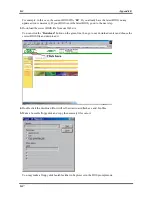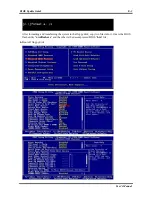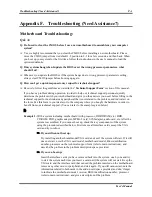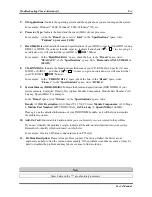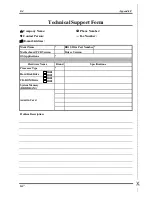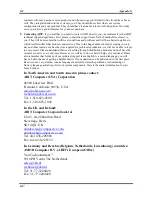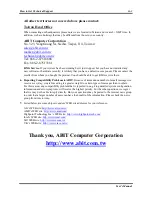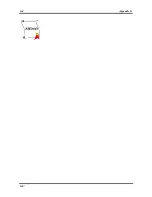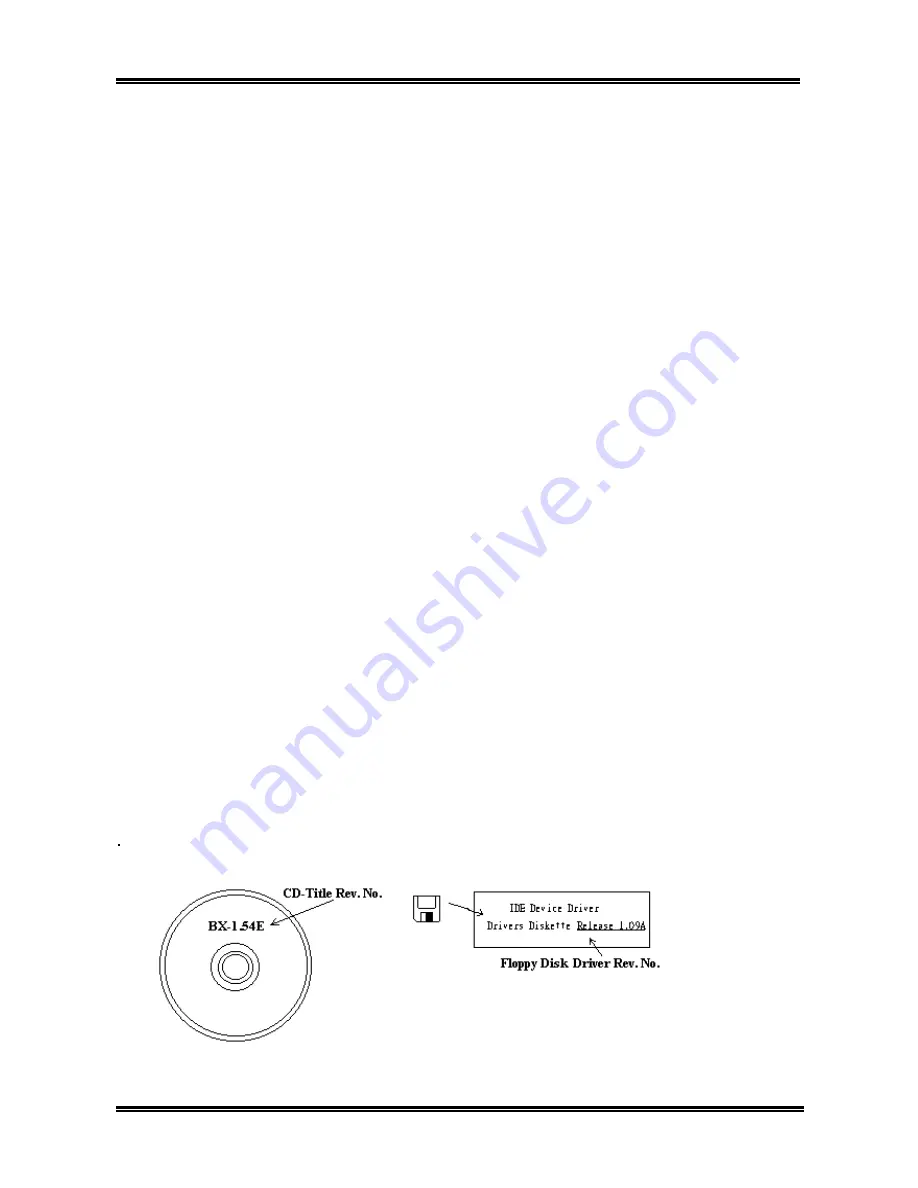
Appendix F
SA7
F-2
-
Example 2:
With a system including: motherboard (with processor, DDR DRAM, etc.) HDD,
CD-ROM, FDD, graphic adapter, MPEG-2 card, SCSI adapter, audio card, etc. After
assembly and after having installed the audio card driver, when you restart the system,
when it runs the audio card driver, it resets automatically. This problem may be due to the
audio card driver. During the starting DOS… procedure, press SHIFT (BY-PASS) key, to
skip CONFIG.SYS and AUTOEXEC.BAT; edit CONFIG.SYS with a text editor, and in
function the line that loads the audio card driver, add a remark REM, in order to disable
the audio card driver. See the example below.
CONFIG.SYS:
DEVICE=C:\DOS\HIMEM.SYS
DEVICE=C:\DOS\EMM386.EXE HIGHSCAN
DOS=HIGH, UMB
FILES=40
BUFFERS=36
REM DEVICEHIGH=C:\PLUGPLAY\DWCFGMG.SYS
LASTDRIVE=Z
Restart the system. If the system starts and does not reset, you can be sure that the
problem is due to the Sound Card Driver. Write down the Sound Card model,
motherboard model, BIOS identification number on the technical support file (refer to
main instructions), and describe the problem in the space provided.
We will show you how to fill the “
Technical Support Form
” right now.
/
Instructions
/
To fill in this “
Technical Support Form
”, refer to the step-by-step instructions given below:
1
*
. Model
Name:
Note the model number given in your user’s manual.
For example: SA7, NV7-133R, KR7A-133R, etc…
2
*
. Motherboard PCB Version:
Note the motherboard PCB version labeled on the motherboard slot or
back side as “
Rev:*.**
”.
For example: REV: 1.01
3
*
. BIOS ID & Part Number:
See
Appendix D
for detialed information.
4. DriverVersion:
Note the driver version number indicated on the device driver disk or CD-ROM (if
have) as “
Release *.**
” (or Rev. *.**, Version *.**). For example:











